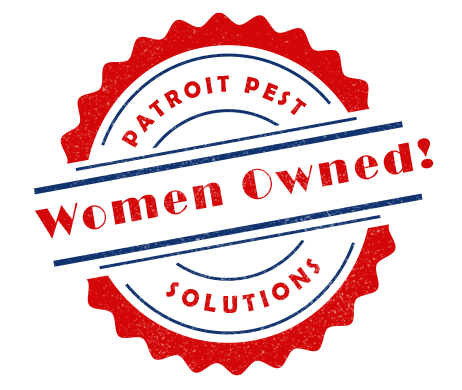If you’ve noticed tiny red specks crawling across your windowsills or walls, there’s a good chance you’ve encountered clover mites. These tiny pests, while harmless to humans and pets, can be a nuisance to homeowners. But what exactly are clover mites, and why do they seem to appear out of nowhere? This comprehensive guide will help you understand what clover mites are, why they show up, and what steps you can take to get rid of them and prevent their return.
Understanding Clover Mites
What Are Clover Mites?
Clover mites (Bryobia praetiosa) are tiny arachnids that belong to the same family as spiders and ticks. Measuring between 0.75mm and 1mm in length, these creatures are so small that they often go unnoticed until they appear in large numbers. Their oval-shaped bodies are reddish-brown, and they have two front legs that are significantly longer than the others, which they use almost like feelers.
While they’re known as clover mites because they often feed on clover and grass, they also consume a variety of plants, including flowers and garden vegetables. This makes them common lawn and garden pests.
Are Clover Mites Harmful?
The good news is that clover mites are not harmful to humans or animals. They don’t bite, sting, or carry diseases. However, they can be a major nuisance when they invade homes. When squished, clover mites leave behind red stains that can discolor fabrics, walls, and furniture. This staining isn’t their blood but rather a pigment they produce.
Why Do Clover Mites Invade Homes?
If you’re seeing clover mites indoors, it’s likely because they’re looking for shelter or alternative food sources. Here are some of the key reasons why these pests may infest your home:
1. Weather Changes
Clover mites thrive in mild weather, particularly in spring and fall. Sudden changes in temperature can drive them indoors as they search for more stable conditions. For example, as colder temperatures set in or during a hot and dry spell, clover mites may move inside to escape unfavorable outdoor conditions.
2. Over-Fertilized Lawns
Excessive fertilization can lead to lush, fast-growing grass and plants, which clover mites find particularly appealing. If your lawn is overly healthy and well-fertilized, it may inadvertently invite these pests onto your property.
3. Easy Access to Entry Points
Clover mites are so small that they can enter through the tiniest cracks and crevices around windows, doors, and foundation walls. Homes with minimal sealing or older construction are more vulnerable to these pests.
How to Identify a Clover Mite Infestation
Clover mite infestations are relatively easy to identify. Here are some telltale signs:
- Tiny Crawlers Indoors: Look for miniature red or brown moving dots along window sills, walls, and other sunny indoor areas.
- Red Stains: If you accidentally squish the mites, you’ll notice red smears, especially on lighter surfaces.
- Presence Outdoors: Check around the foundation of your home, garden walls, or nearby vegetation for clusters of tiny red mites.
How to Get Rid of Clover Mites
Dealing with clover mites can be challenging, but there are effective strategies to prevent and eliminate them. Here’s how you can tackle a clover mite infestation:
1. Seal Entry Points
Start by sealing all cracks and crevices around windows, doors, and your home’s foundation. Use silicone caulk or weather stripping to block their access. Repair any broken screens and replace damaged weather seals to minimize entry points.
2. Remove Vegetation Close to Your Home
Clover mites often climb up plants and shrubs to access windows and walls. Maintain a vegetation-free zone of at least 18-24 inches around your home’s perimeter to create a buffer zone and discourage their movement indoors.
3. Limit Over-Fertilization
Avoid over-fertilizing your lawn and plants, as lush vegetation can attract clover mites. Use appropriate fertilizers and focus on balanced nutrition rather than excessive growth.
4. Vacuum the Mites Indoors
If clover mites are already inside your home, avoid squishing them to prevent staining. Instead, use a vacuum cleaner with a hose attachment to gently remove them. Dispose of the vacuum bag immediately to ensure they don’t reenter your home.
5. Apply Diatomaceous Earth
Sprinkle diatomaceous earth, a natural, non-toxic powder, around entry points and areas where mites congregate. It works by dehydrating the mites on contact and is safe for pets and humans when used as directed.
6. Use Pesticides Sparingly
For severe infestations, consider using pesticides labeled for clover mites. Always follow the manufacturer’s instructions and consider hiring a pest control professional for safe and effective application.
Preventing Clover Mite Infestations
Getting rid of clover mites is one thing, but preventing them from returning is equally important. Here are steps to reduce the risk of future infestations:
- Regular Home Maintenance: Periodically inspect and repair potential entry points to keep pests out.
- Manage Outdoor Spaces: Keep lawns trimmed and avoid fertilizing too frequently. Add a mulch or gravel border around your home to deter mite migration.
- Monitor Seasons: Be extra vigilant during spring and fall, when clover mites are most active, to catch any infestation early.
Clover mites may not pose a direct threat, but they can still be a significant annoyance when they invade your home or outdoor spaces. By understanding their habits and implementing proactive strategies, you can keep these tiny pests at bay.
If you’ve been struggling to manage clover mites or similar pests, there’s no need to feel defeated. With the right knowledge and tools, you can reclaim your space and enjoy a pest-free environment.




